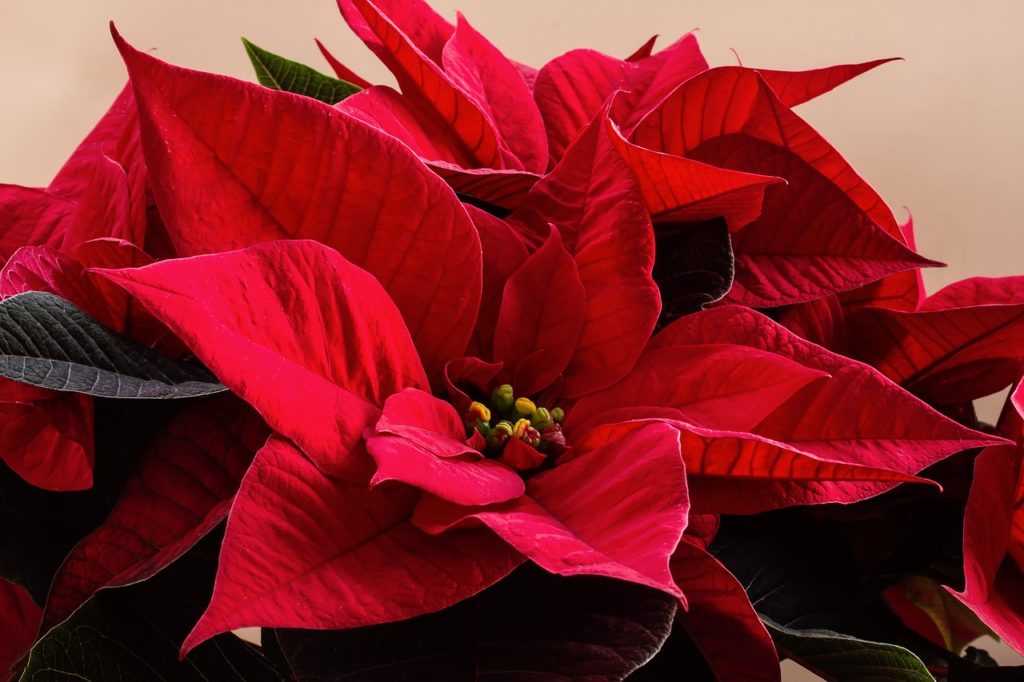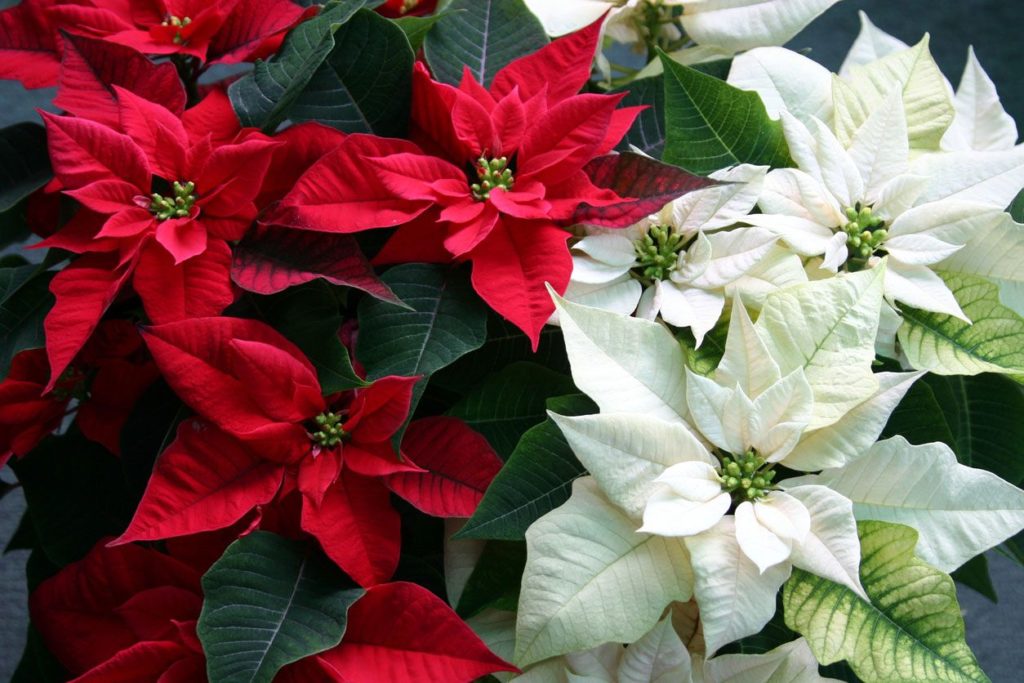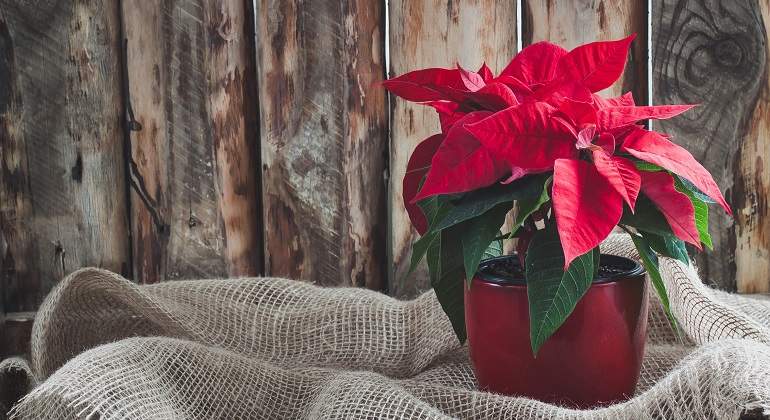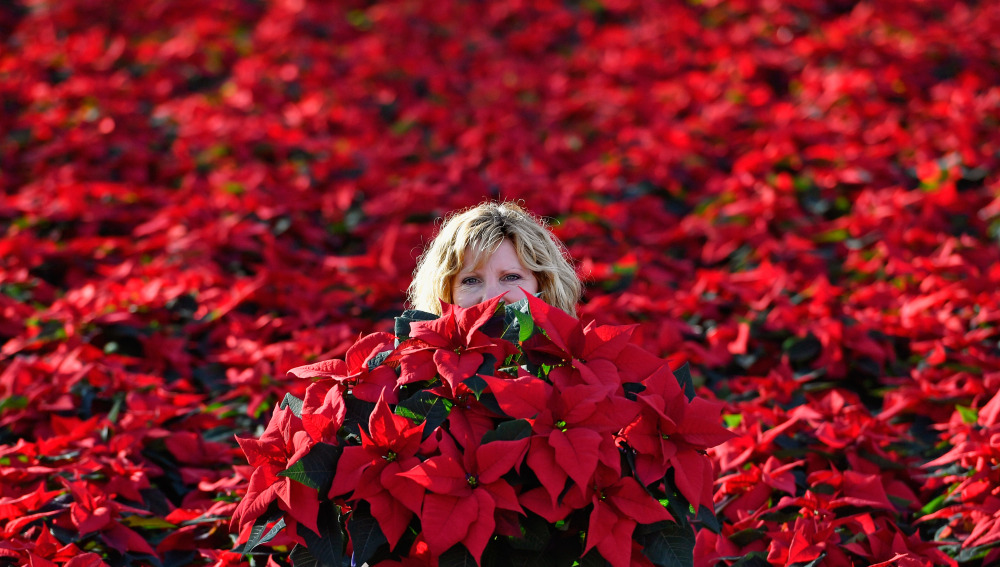The Poinsettia is also known as the famous Christmas flower, very popular worldwide for being the symbol of Christmas and very characteristic for its fragrant red color and velvet petals, let's learn a little about the care we must have with this beautiful flower and some tips for its conservation.

Poinsettia
The poinsettia is well known as the Christmas Eve flower, shepherdess, Christmas flower, among many other names, its scientific name is Euphorbia Pulcherrima. It corresponds to a species of the Euphorbiaceae family originating from the Mexican country and also from Central America. It is widely used in gardening as a shrub, especially in the area of floriculture, being widely used as an indoor plant at Christmas time. It is said that there are approximately 100 species to be cultivated.
One of the main characteristics of the Easter Flower is its striking colors, which is why it is widely used for different decorations, being known by different names depending on the country in which it is being applied, such as Pascuero in Mexico, Federal Star in Argentina, flower of Christmas in Central American countries and many other names, they are normally widely used at Christmas time.
Properties of the Poinsettia
It is a small deciduous shrub that is very little branched, it can reach up to 4 meters in height. The leaves can be lanceolate, also ovate-elliptic, and they can also be entire or toothed. They have thick stems but they can also be smooth. Its leaves have smooth or toothed margins, they can also be simple or alternate, ovate to elliptic, sinuous and with 2 very deep lateral sides with subacute ridges.
It has the inflorescences or the flowers that occur on the plant, they are located at the apex of the stems that are responsible for forming a single female flower without any petals or sepals, it is also surrounded by some individual male flowers that have a structure known as ciato belonging to the genus Euphorbia. The appearance of some yellow glands can be observed from each of the cyaths.
Each of these inflorescences are surrounded by long leaves known as bracts that have a very characteristic red color located in the upper part of the plant, giving a very striking appearance to the flowers. There are cultivars that have bracts with different colors to be distributed during the year but especially at Christmas time, being attributed during this time because they bloom in winter.
It should be noted that in the northern hemisphere they tend to bloom from mid-November to February and it is considered essential for the Poinsettia not to receive any light for 12 hours, mainly from mid-October to Christmas to achieve proper flowering.
History of the Poinsettia
The history of the Poinsettia represents great interest due to its symbolic character due to the time of year in which it is observed, giving rise to various stories depending on the country in which the narration is centered, standing out in the following countries that we describe below:
Mexico
In Mexico it is well known as the Christmas flower or Easter flower. The natives of the nation identify it as Nahuatl, cuetlaxóchitl which means "Flower that withers", it is a term that represents the union of 2 others: cuetlahui, “wither” and xochitl, "flower". Another way of being known is from cuetlaxtli "leather" and xochitl. It has a literal translation as "leather flower" due to its very bright red color in the petals, being very similar to the recently detached skin.
Another denomination, but much less frequent, is that of the term cuitlatl meaning "excrement", because the birds tend to defecate all the ingested seeds, they tend to spread them and the plant could be born from the excrement. It became known to the rest of the world during the viceroyalty period of New Spain, where the churches were decorated during the Christmas holidays. Then this tradition spread to Europe in the year 1678.
Argentina
In Argentina, it is very popular by the name of federal star, this is due to its red color, being very emblematic for its red color that motivated the Federal Party and also that the shape of the petals can remind us of a star. Being widely used in the 1970s as a symbol of the Montoneros army. It can become known by other names such as shepherdess, good night, poinsettia and poinsettia.
United States
In the United States, it stood out for a character known as Paul Ecke, he belonged to the third generation of the Ecke family, they were a group of German immigrants who settled in Los Angeles in the mid-1900s, being the main person responsible for promoting the use of the plant during the winter time. In addition to transforming the entire market, usually using cuttings that were sent by plane instead of using mature plants that are transferred by train.
Being distributed free of charge in pots with the plants to the different television stations that appeared live on Thanksgiving until Christmas. All these flowers appeared live on shows like The Tonight Show and also on Bob Hope's Christmas special, since then they have been promoted commercially.
Distribution and habitat
In Guatemala it is a plant that can be located almost everywhere, normally where there are medium to high elevations towards the coast. Its state is wild and it can be located in humid areas or also in wooded ravines.
In Mexico, the different wild populations located in Mexican territory are found in the states of Guerrero, Oaxaca, Michoacán and Chiapas, being found naturally, if cultivated it can be located throughout the country.Highlighting some states for presenting crops such as Morelos, Michoacán, Puebla, State of Mexico, Jalisco, Veracruz, Querétaro, Guanajuato, Chiapas, Guerrero and Baja California.
In the Mexican country, more than a hundred different species can be cultivated, normally they are cultivated by specialized companies focused on the market or on obtaining new varieties to be cultivated in pots and containers, in this case, the color red is the one that mainly dominates the market with around 70 percent.
In the case of its wild form, they can grow in ravines and also in steep or open places, mainly in the western and southern regions of Mexico. This type of wild plant can be brought into homes as an ornamental, they are cultivated by farmers and can usually be found in abandoned human settlement sites or on the sides of roads and plots (rural environments).
It corresponds to a plant that complies with the photoperiod, requiring short days and long nights to be able to cause a coloration of the bracts (Leaves). Therefore, good lighting is necessary to prevent them from discoloring or falling. In terms of temperature, the plant cannot withstand cold or excess temperature, so it is recommended between approximately 20-22 °C. during the day and 16 °C at night.
The plant can tolerate temperatures of 40 °C, not supporting drafts and sudden changes in temperature. A good environmental humidity is strictly necessary, in this way it is possible to avoid the fall of the leaves, but it is also very sensitive to soil humidity, due to the excess of water reaching the root rot. After the flowering time, during the time when the leaves have fallen and lose their bracts, the whole plant tends to be pruned, allowing stems of approximately 5-10 cm.
State of conservation
The Poinsettia is considered one of the most exotic, elegant and beautiful flowers in the world; considering itself as one of the 10 most sought-after potted plants throughout Europe and North America. Highlighting its great importance for being a plant that symbolizes Christmas in all parts of the world.Its species can be found in the wild in different very characteristic geographical areas such as Mexico and Central America, where they are highly relevant plants, it represents a genetic reserve that is still unexplored.
In cases of genetic improvement by mutation, it is only applied to modify some characters and in the wild Poinsettia species, there are specimens with characteristics that are necessary for the market. The effect of mutation in ornamental plants can be easy to detect, being what is new and necessary to emerge clearly focused on the visual aspect.It is considered a plant with a wide distribution throughout the world, so it is not considered a species in any category.
Poinsettia Care
All types of plants must have special care, particularly if they are plants planted for commercial purposes and with high global demand, as in the case of the Poinsettia, being a highly sought-after flower at Christmas time and used ornamentally, for this It is necessary to take into account the following recommendations:
Poinsettia Fertilizer
Once flowering is complete, the poinsettia will need to apply liquid fertilizer to the irrigation water used for the plant. The universal fertilizer can be used or also a fertilizer with a slow release, preferably it should be applied once every 10 days, it is enough to favor its growth.
Conservation
It is recommended once all the red leaves have fallen, preferably in the selected terrain, many times it is transplanted in gardens. In cases of carrying out the transplant in areas where frosts are carried out, they can also be kept inside homes, for this reason it is highly observed in internal decorations as long as general care is carried out and with prior pruning.
Poinsettia Pruning
Pruning should be carried out at the end of January, where the poinsettia tends to lose its leaves (red and green). During this period, it is recommended that it be pruned. Being located in some homes, it is advisable to keep the green leaves and also manage to keep the red leaves for months. For these cases, the stems tend to be cut and leaving it 10 centimeters high, it is advisable to use gloves during this procedure because they have a sap that can be sensitive to the skin, finally the end should be sealed with melted candle wax.
Poinsettia's Rest
The rest time for the Poinsettia or the Christmas Flower in winter time is recommended in places with free heating, in the same way an irrigation must be maintained during this time but much more limited (once a week).
Transplant of the Poinsettia
It is applied during times of spring, being transplanted in a larger pot, applying a mixture of universal substrate to facilitate its growth, preferably humus or sand, it is advisable to provide it with good natural lighting and a temperature of approximately 20°. Characterized by achieving the formation of stems with continuous growth and also producing good leaf development in summer and autumn.
Flowering
The poinsettia can bloom during December, beginning to form new bracts (red leaves). It needs a daily period of approximately between 12 and 14 hours in total darkness between the end of September or the beginning of October. When you are at home, you cannot find yourself in a room that allows a few hours without light and thus have a plant with a good Christmas look, sometimes it can grow artificially in the dark that it needs.
It is necessary to cover it with a dark plastic or, failing that, use a thick cardboard or else a protective hood that is covered with aluminum foil, preferably in the afternoon-night time, achieving approximately 14 hours without light. If this procedure is not carried out, the Poinsettia will grow properly but will not bloom. Failing that, you will have a Poinsettia with green leaves but not red ones.
In December, it will be possible to have a Christmas or Poinsettia plant that will have bloomed again, much larger and also a little more appreciated after executing all the indicated care.
We hope this article has been helpful, we leave you others that will surely interest you:




